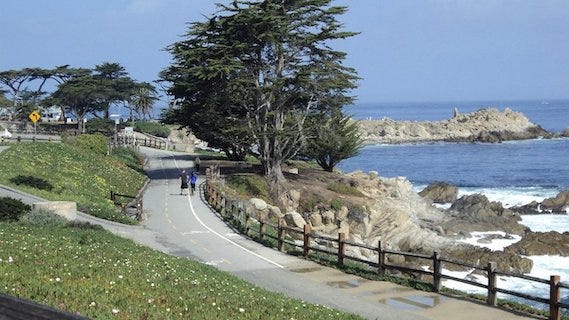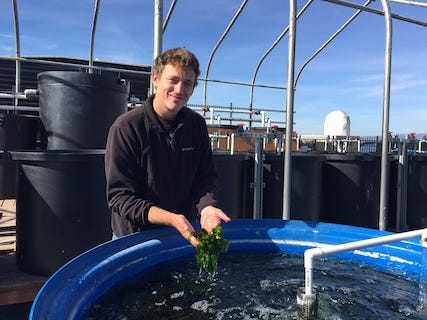This Week on the Central Coast...
New trails in Santa Cruz, renovated trails in Monterey, a mural contest, and seaweed farming for climate change
Volunteers helping to build new trail system in Santa Cruz
By the end of the year, Cotoni-Coast Dairies National Monument will be open for recreational use. Dozens of volunteers have been hard at work creating a trail system from scratch, clearing poison oak patches, building bridges over creeks, and devising funnel systems to prevent overflowing. The idea is to create several trail loops of varying difficulties so a wide range of visitors, including hikers, bikers, and horseback riders, to enjoy the Monument.
A spokesperson for the Bureau of Land Management emphasized their intent to leave portions of the area “set aside for wildlife and for traditional cultural practices for the Amah Mutsun tribe.”
Cattle grazing programs remain on the land as well, providing helpful maintenance for managing wildfires.
“The crews expect to have the first loop, a 9-mile section north of Davenport, available for public use by the end of summer.”
Point Pinos Coastal Trail Project is complete
Renovations and construction of the California Coastal Trail are now complete. The recreational trail will allow people to continuously travel through Monterey and Pacific Grove on structured pathways along the coast. The completed path features restored areas of natural vegetation, ten access points to the beach, and new orderly parking.
The entire Monterey Bay Coastal Recreation Trail stretches over 18 miles, from Castroville to Pacific Grove.
Carmel Plaza is holding a mural contest with a prize
The mural will be located on an 8’ x 8’ wall overlooking the courtyard, between Dutch Door Donuts and Mark Fenwick Local artists from Monterey, Hollister, and Santa Cruz Counties are encouraged to enter. Submitted artwork should focus on the theme “What does Carmel-by-the-Sea mean to you?”
Officials will decide on the top four designs, then hand it over to locals to pick the winner. The overall winner will receive a $1,000 prize.
Submissions will be accepted on the plaza’s website from May 23 to June 27.
A local cattle rancher hopes to fight climate change with seaweed
A Carmel Valley rancher, Luke Gardner, is hoping to find a native species of seaweed that can help reduce annual methane emissions by settling the stomachs of his cattle. “Methane is a greenhouse gas 25 times stronger than carbon dioxide”. Cows are one of the leading sources of methane in California, burping out the gas as they graze.
Australian researchers found that a certain seaweed, Asparagopsis taxiformis, reduced emissions by 80%. However, the seaweed isn’t very common. This prompted Gardner to begin testing seaweed found commonly on the Central Coast. Ideally, the right seaweed will reduce methane emissions and grow easily, which would help reduce its costs.
Some native seaweeds seem to fit this role and Gardner has begun to grow them in large tanks in Moss Landing. Once he finds the right growing conditions, he can then grow enough seaweed to feed to the cattle while keeping them in “a giant burp chamber” to measure their emissions. When talking about seaweed, Gardner says: “They’re kind of like the Amazon rainforest, in terms of holding potential bioactive compounds that could lead to solutions for current and future issues.”







